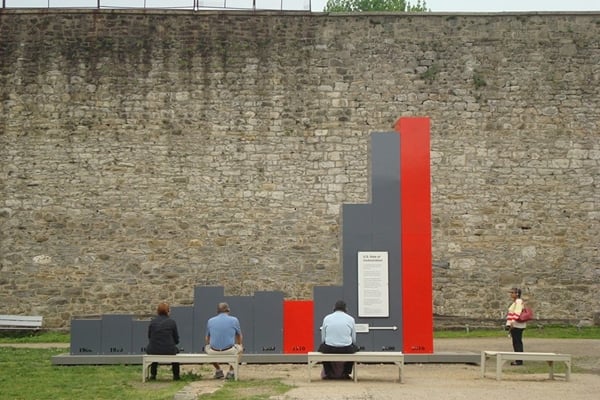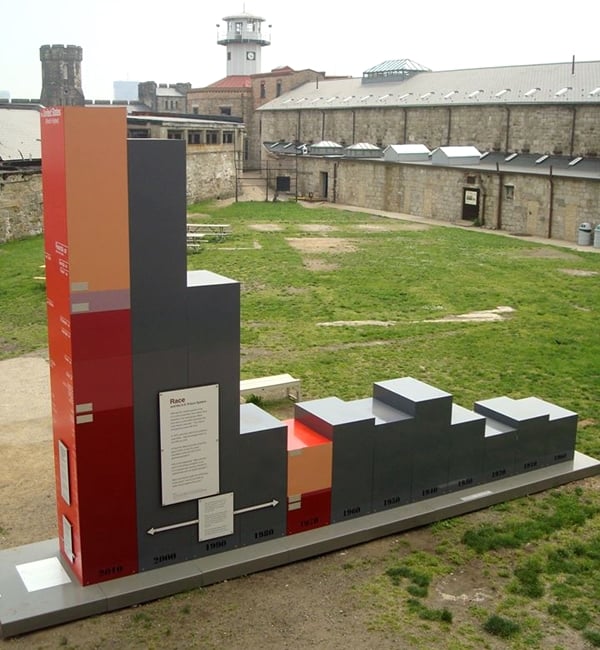Art & Exhibitions
Sculpture Shows Skyrocketing Incarceration Rate


Benjamin Sutton

The new large-scale sculpture newly on view at Philadelphia’s historic Eastern State Penitentiary may look something like a combination of Sol LeWitt and John McCracken at first, but it is in fact a bit of brick-and-mortar data visualization. The piece, a permanent installation titled simply The Big Graph, shows the US’s rapidly rising incarceration rate. One side of the sculpture, which currently measures 16 feet in height and may get taller—it was designed to be updated through 2030—illustrates the percentage of Americans who are incarcerated; another side charts the racial breakdown of the US prison population from 1970 to today; and another facet of the piece lists other countries’ incarceration rates and capital punishment policies.
“Not all our visitors want to have these conversations, and that is completely fine with us,” Sean Kelley, Eastern State Penitentiary’s vice president, told Newsworks. “We’ll still tell the stories of Al Capone’s incarceration and the stories of escapes. But we also are thinking this is the place for people who want to see the huge changes in the U.S. criminal justice system. This is the place to have those conversations. So—yes—we are definitely throwing our hat in the ring as the national prison museum.”
Not surprisingly, the sculpture reveals that the US prison population has been growing exponentially since 1970. “Today the U.S. imprisons more than 700 people for every 100,000 citizens,” as the piece’s text explains. “This is the highest rate of incarceration in the world. Crime rates have gone up and down throughout these years. They are largely independent of the rate of incarceration.”

The Big Graph (2014).
Photo: Courtesy Eastern State Penitentiary.
“Americans are not more violent, they do not commit more crimes than they did— in a significant way—40 years ago,” Kelley said. “Our laws have changed, and our policing and prosecution have changed. We are much more committed as a country to send people to prison as a response to crime than we were 40 years ago.”